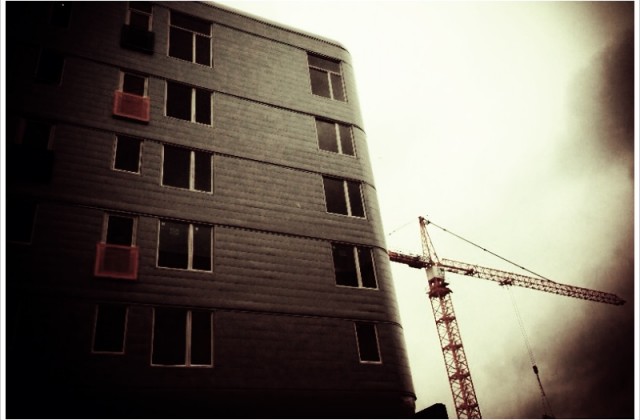Hard to Find the ‘Incentive’ in Incentive Zoning
This post originally appeared in the Spring edition of The Voice, NAIOP’s semi-annual government affairs newsletter.
Recently, the City of Seattle has placed an emphasis on what it calls incentive zoning, a program that charges a fee in exchange for granting additional Floor Area Ratio (FAR) for new housing and non-residential development. This idea is paradoxical: charge a fee for taking on more risk and costs? That’s an incentive? City leaders, who see additional FAR like allowing a fisherman to increase his catch, do not share the incredulity. Smart Growth Seattle has engaged on this issue with data, making the argument that we need a better way.
Explaining the economics
Councilmember Mike O’Brien invited noted local real estate expert Mike Scott to the Council table recently to explain the real estate market trends for multifamily housing. Scott shared a chart showing that, yes, the rules of supply and demand do indeed actually apply to the multifamily housing. When apartment vacancies increase faster than demand, apartment prices drop. When vacancies fall in the face of rising demand, prices go up.
“It doesn’t work like that,” is often the response by many affordable housing advocates and those suspicious of growth. Persuading the Council to accept the real estate business cycle is a first step toward helping them understand that if their concern is high prices, the best thing they can do is reduce rules and regulations that slow housing production.
Where is the problem?
The crisis of housing supply for people who make 60 to 80 percent of Area Median Income (AMI) is something of a mirage. Workforce housing, as it is usually called, is actually in excess supply in Seattle. We’ve cited King County and other data that consistently show a surplus of housing priced for people who earn from $37,000 to $44,000 annually. Rents for older housing stock, something supported by Scott’s presentation to Council, are cheaper; while rents are higher for new construction. It is that new construction that attracts the most attention (and irritation) from opponents of growth who argue that, “all this new housing is making housing more expen- sive.” This simply isn’t the case.
What is the best tool?
Incentive zoning, as it is currently construed, is no incentive. The data we have presented to Council and in the press is pretty clear, too. Almost two-thirds of projects eligible to take the so-called incentive didn’t. That means that all that additional capacity that the City was essentially selling, was priced too high. Lost in the failed transactions were additional housing supply and the benefits that would accrue to the public through the fee and additional sales tax, jobs, and wages created by building the additional housing.
The future of multifamily housing
Seattle currently has no aggressive strategy to broadly increase housing supply, and to strategically and efficiently direct subsidies for lower-income level housing. Instead it has fees and taxes for new growth through its incentive program, the housing levy, and useful programs like the Multifamily Tax Exemption.
The Council should not discourage innovation in the single-family realm, in microhousing, or in the production of other multifamily products by mak- ing more rules, imposing more process, and charging more fees. If, with the help of NAIOP and others, Smart Growth Seattle can fend off additional burdens, we can start making the case for a more positive and constructive set of policies to welcome growth of all kinds and encourage new housing development of all types in all neighborhoods in the city.


